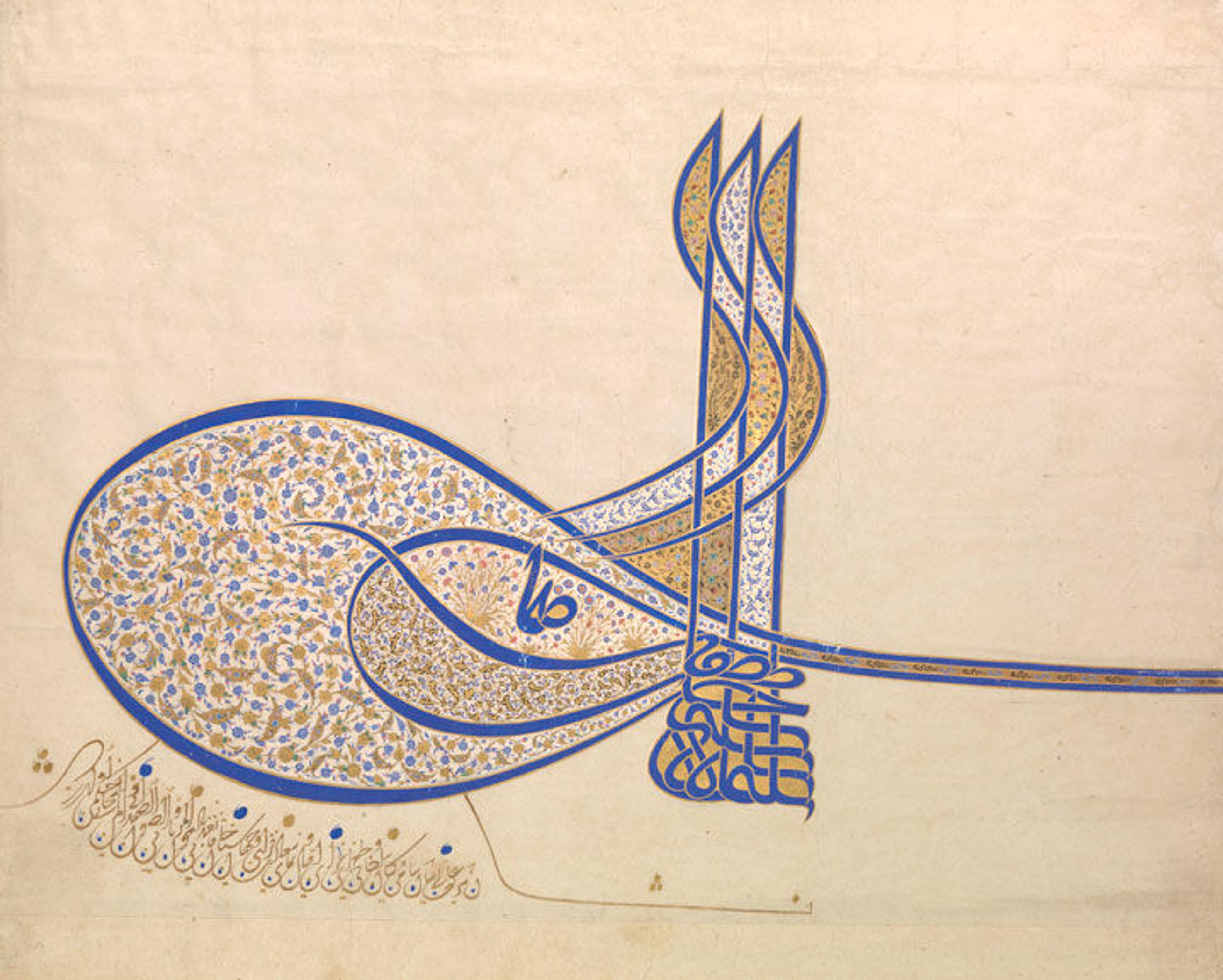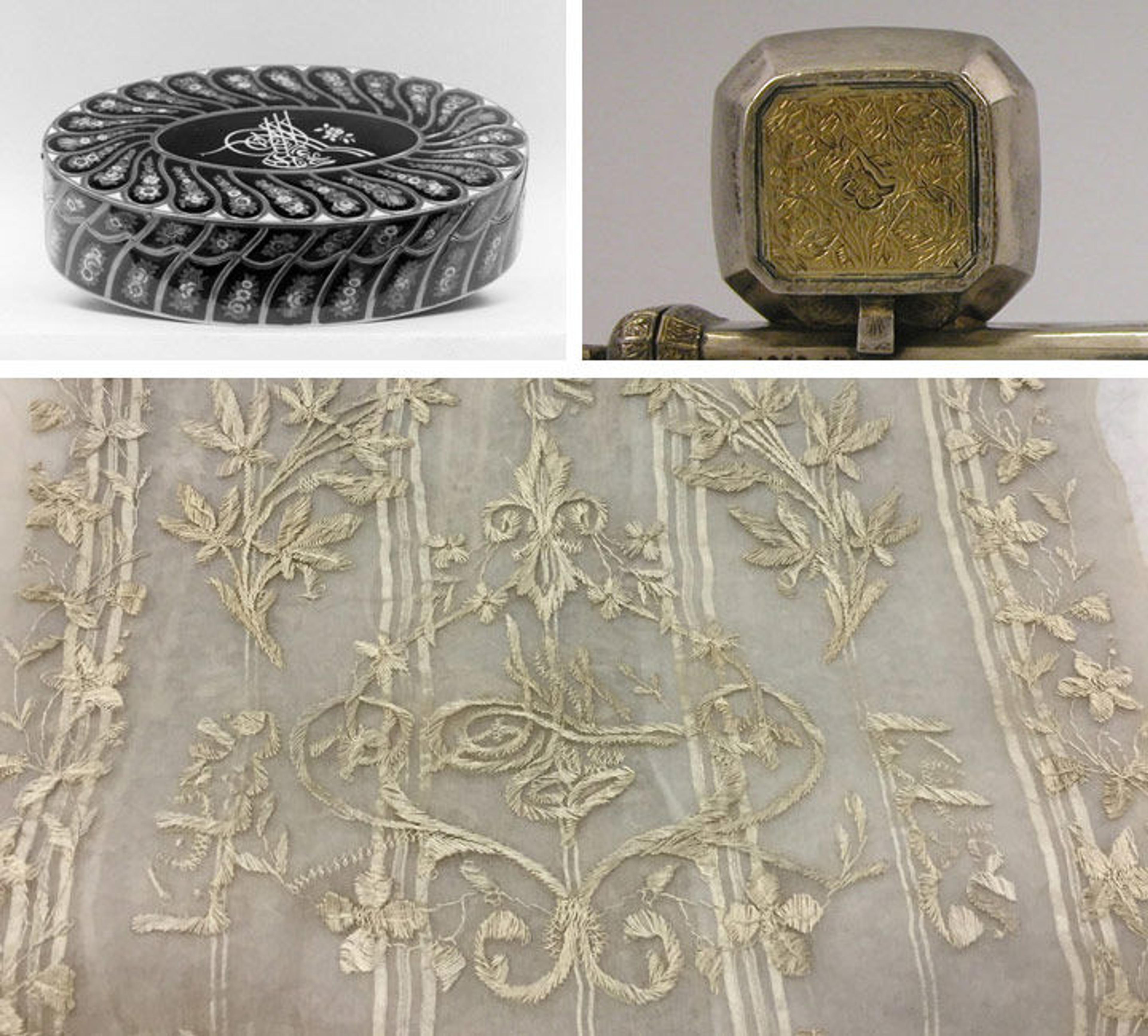Branding through the Ages: The Tughra in Ottoman Art

The official signature shown in this tughra translates as "Süleiman, son of Selim Khan, ever victorious." Tughra (official signature) of Sultan Süleiman the Magnificent (r. 1520–66), ca. 1555–60. Turkey, Istanbul. Islamic, Ink, opaque watercolor, and gold on paper; H. 20 1/2 in. (52.1 cm), W. 25 3/8 in. (64.5 cm). The Metropolitan Museum of Art, New York, Rogers Fund, 1938 (38.149.1)
«Visitors to the Museum and its website likely have noticed The Met's recently unveiled new logo—a unified visual identity intended to make the Museum recognizable at first glance. Though logos may seem to be a modern invention related to companies or institutions, this type of branding has actually been present in the Islamic world for hundreds of years.»
Perhaps the best historical examples of this kind of graphic symbol are the tughras (imperial signatures, or calligraphic insignias) used by Ottoman officials on documents, coins, and other objects, as well as to mark buildings. The word tughra comes from an Oghuz (a historical Turkish language) term for "seal." Anatolians have used official tughras since the reign of the Seljuqs, though no examples remain and scholars debate how this form would actually have looked. (The upcoming exhibition Court and Cosmos: The Great Age of the Seljuqs, opening April 27 at The Met Fifth Avenue, will reveal more about this fascinating period.)
According to legend, the Ottoman form of the tughra originated with an illiterate sultan, who, unable to sign his name, dipped his three fingers in ink and impressed them on a page. While this account is probably not true, three lines can easily be seen in the refined form that later came to be fixed during the reign of Mehmed the Conqueror (r. 1444–1446, 1451–1481), and which remained virtually unchanged for centuries.
All Ottoman tughras include three vertical shafts and two concentric oval loops at left. These undulating forms are calligraphic insignias that include the name of the reigning sultan, the name of his father, and the phrase "the eternally victorious." While tughras of various sultans may look the same to us, variations in names necessitated small changes to the design. All sultans, as well as princes, would have their own tughra, which court artists created anew with each ruler's succession.

Clockwise from top left: Snuffbox with tughra of Ottoman Sultan Mahmud II (r. 1808–1839), ca. 1820–30. Swiss. Gold, enamel; 3/4 x 3 1/16 x 1 5/16 in. (1.9 x 7.8 x 3.3 cm). The Metropolitan Museum of Art, New York, Gift of J. Pierpont Morgan, 1917 (17.190.1143); Pen case and inkwell with tughra of Ottoman Sultan Mahmud II (r. 1808–1839)(detail view of inkwell), first half 19th century. Turkey. Islamic. Gold, silver; partial gilded, probably cast; Inkwell: L. H. 1 3/4 in. (4.5 cm), W. 1 5/8 in. (4.2 cm). The Metropolitan Museum of Art, New York, Gift of Marilyn Jenkins in memory of her father, Dr. Arthur M. Jenkins, 1982 (1982.478.6); Scarf with embroidered tughra (detail), ca. 1905. Probably Turkey. The Metropolitan Museum of Art, New York, Gift of Mrs. S. Adolphus Knopf, 1942 (C.I.42.119.3)
It is extremely difficult to read the specific calligraphy in tughras, but these forms were simply meant to be recognized, rather than read completely. It was more difficult still to recreate these ornate, complex signatures produced by specialized court artists and illuminators. Tughras appear on official documents and objects of all types—including the snuff box, inkwell, and textile shown above.
The tughra finally fell out of use in the early 20th century, at the end of the Ottoman Empire. Nonetheless, for nearly one thousand years this "branding" was immediately recognizable, even to those who were illiterate, and served as the same kind of visual identity as modern-day logos. This connection between past and present graphics helps me to broaden my understanding of the Ottoman Empire just a little bit more.
Related Link
RumiNations: "Six-Winged Angels and Other Christian Imagery in Arts from the Ottoman Empire" (October 6, 2015)
Courtney Stewart
Courtney A. Stewart is the senior research assistant in the Department of Islamic Art.